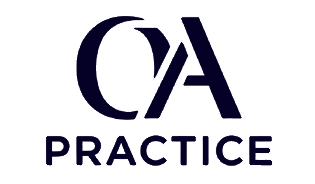D446 Adult Health II - Set 2 - Part 1
Test your knowledge of technical writing concepts with these practice questions. Each question includes detailed explanations to help you understand the correct answers.
Question 1: A nurse observes a patient with left-sided heart failure sitting upright in bed at night. Which pathophysiological process best explains why this position provides relief from respiratory symptoms?
Question 2: During chronic pancreatitis exacerbation, a patient develops steatorrhea. Which enzyme deficiency specifically causes this fatty stool characteristic that distinguishes pancreatic dysfunction from other causes?
Question 3: A patient with peripheral venous disease has brown discoloration around the ankles. What underlying process causes this specific skin change that differentiates venous from arterial disease?
Question 4: When educating about riluzole for amyotrophic lateral sclerosis, what realistic expectation should the nurse set regarding this medication's therapeutic effect on disease progression?
Question 5: A patient with COPD uses pursed-lip breathing during exertion. Which physiological benefit does this technique provide that specifically helps manage their breathing difficulty?
Question 6: Following a stroke, a patient exhibits unilateral weakness and facial droop. Which immediate intervention takes priority to prevent the most life-threatening complication?
Question 7: A dialysis patient develops aluminum toxicity from phosphate binders. Which manifestation would most specifically indicate this complication requiring immediate medication adjustment?
Question 8: In Cushing's disease, which metabolic disturbance directly results from excessive cortisol that requires careful monitoring and management?
Question 9: A patient with diabetes mellitus type two experiences dawn phenomenon. What intervention would most effectively address this specific pattern of glucose elevation?
Question 10: During tuberculosis treatment, a patient notices orange-colored urine. Which medication causes this harmless discoloration that the nurse should explain is expected?
Question 11: A patient with HIV develops oral thrush and weight loss. Which laboratory value best indicates the need for opportunistic infection prophylaxis?
Question 12: Following radiation therapy, a patient develops moist desquamation at the treatment site. Which intervention would best promote healing while preventing infection?
Question 13: A patient with systemic lupus erythematosus develops a butterfly rash before outdoor activities. Which preventive measure is most critical for this patient?
Question 14: In glomerulonephritis, which urinalysis finding most specifically indicates glomerular damage rather than lower urinary tract infection?
Question 15: A patient taking spironolactone for heart failure develops muscle weakness and cardiac irregularities. Which electrolyte imbalance should the nurse suspect?
Question 16: During a gout attack, why should allopurinol not be initiated until the acute flare resolves completely?
Question 17: A patient with esophageal varices from cirrhosis is prescribed propranolol. What is the specific therapeutic goal of this medication in portal hypertension?
Question 18: When assessing a burn patient, which finding most reliably indicates adequate fluid resuscitation during the critical first twenty-four hours?
Question 19: A patient with rheumatoid arthritis on methotrexate therapy reports unusual fatigue and easy bruising. Which serious complication should the nurse suspect?
Question 20: In SIADH, why does fluid restriction effectively treat hyponatremia despite the patient having concentrated urine?
Need Guaranteed Results?
Our exam support service guarantees you'll pass your OA on the first attempt. Pay only after you pass!
Get Exam Support